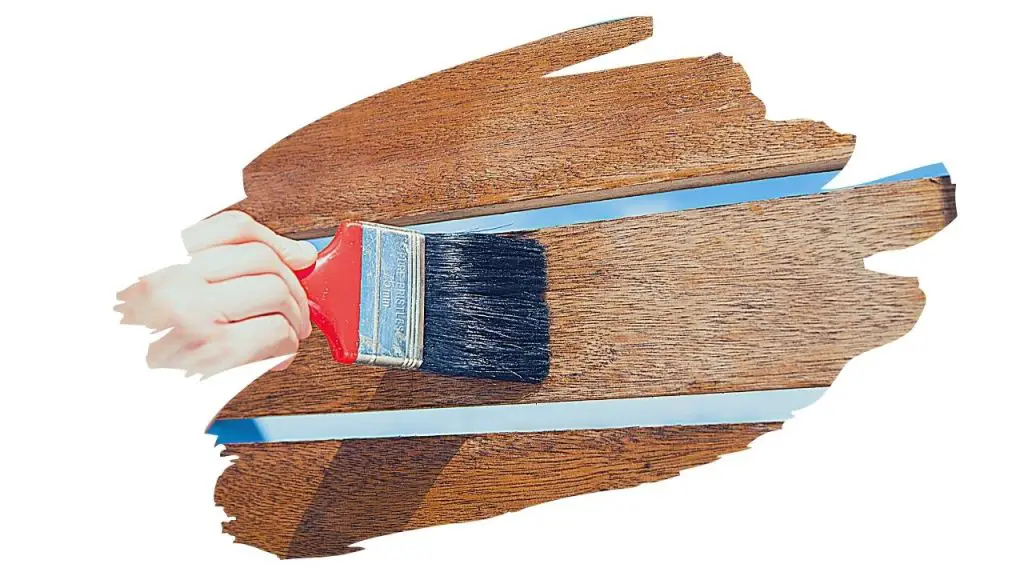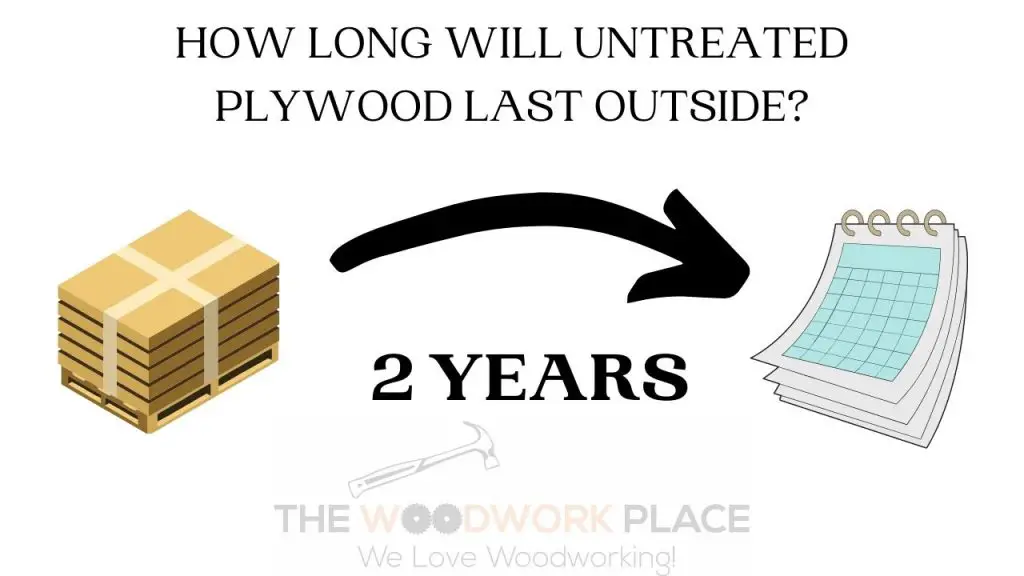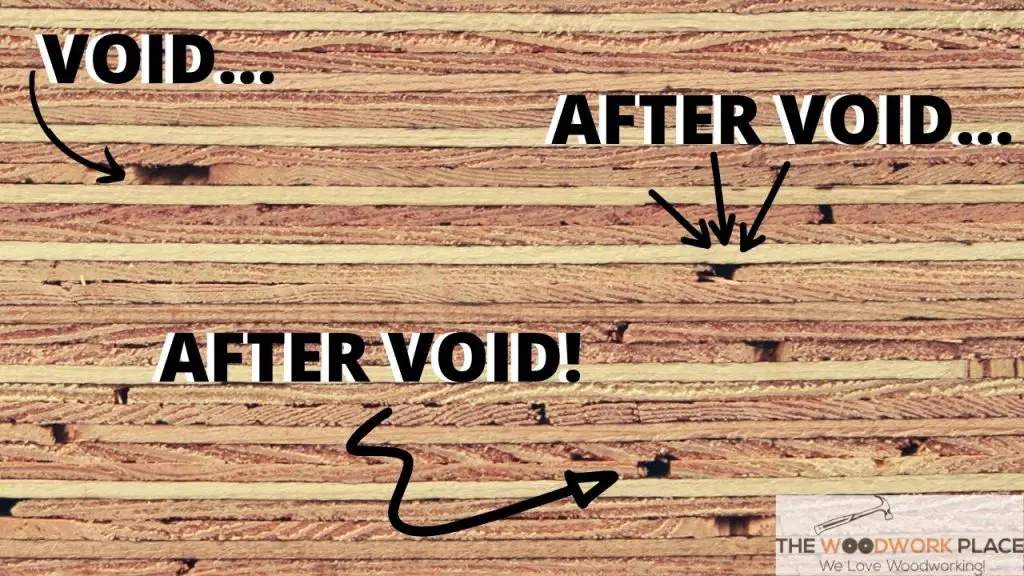Plywood is so strong and durable that it’s easy to forget that this manufactured wood needs extra help to protect it from the elements.
And sealing plywood is one of the best ways to guard this multi-layered lumber from rot, bugs and insects.
So, what is the best plywood waterproof sealer?
If you want to waterproof plywood, then coat it with a quality liquid latex sealer. The sealer protects by wrapping plywood in a plastic water-resistant covering. However, you can give plywood even better water-proofing by sealing it with Aquarium sealant. Aquarium sealant is a silicon sealer that is regularly used on marine ships, aquariums, vivariums, and outdoor plumbing.
Still, plywood can be a bit tricky to seal up properly. This is especially the case when you consider how easy those exposed ply edges make it for water to seep in.
So lets take a further look at what you need to know before you start work on waterproofing your plywood project…

This post may contain affiliate links to products that we receive a commission for (at no additional cost to you). Learn more here.
Can Plywood Be Waterproofed?
First of all, yes, plywood is relatively easy to seal and waterproof. Plus, it is a reasonably moisture resistant manufactured wood to boot.
Why is that? Well, all of those ply layers are glued together using a water resistant adhesive that is great at repelling moisture.
Do You Have To Seal Plywood?
Yes, because plain plywood board is not rot-resistant.
You see, in order to make wood rot-resistant, we put it through a process called ‘pressure treatment’. This process involves putting lumber into a tank and immersing it in a chemical treatment.
Those chemicals then infuse deep into the grain, making the wood resistant to rot and burrowing insects.
Now, thanks to plywoods layered-nature, chemical treatments never quite manage to fully penetrate the veneers at the very center of the plywood sheet.
So if you plan on installing plywood in an area that’s likely to have a lot of water splashback (like, say, a kitchen countertop) you should use an exterior-graded plywood.
Thanks to waterproof glue, exterior-grade plywood can handle water and humidity better than standard ply sheets.
You can learn more about using plywood for kitchen countertops in our post MDF Or Plywood For Countertops: Which One’s Better For Your Kitchen?
Is Pressure Treated Plywood Waterproof?
While we do still put plywood through the pressure treatment process, it is more of a ‘surface-level’ treatment. This is because the treatment only manages to penetrate the outermost layers and edges of the plywood.
As a result, even pressure treated plywood needs to be carefully sealed and fully water-proofed all over, (if you want to prevent it from rotting).
How Long Will Untreated Plywood Last Outside?
If you had a piece of untreated and unsealed plywood, and you used it on an outdoor structure, it would last about 2 years.
Between the wind, rain and sunlight exposure, the ply would start to rot away within one year. And it would completely keel over by the end of year two!
Should You Always Seal Plywood Before Painting?
You should always take the time to seal plywood before you add a coat of paint.
While you can paint directly onto plywood, paint isn’t enough to wrap the sheet in a completely water-tight seal.
In fact, if you apply paint onto plywood without sealing first, then water will easily seep through the paint. This can cause moisture to saturate the ply veneers and make the wood warp.
So, How Do You Protect Plywood From Water?
The answer to this is very simple… you coat it with a waterproof substance that ‘seals’ the plywood in.
Liquid latex sealers are always a popular sealant choice. So lets have a look at some of the most popular sealers on the market;

Can You Use Thompson Water Seal On Plywood?
One of the best weatherproofing sealers available is Thompson’s WaterSeal.
Simply put, yes, you can use this brand of sealer on plywood. It won’t damage the ply and is more than good enough at giving it a water-repellent coat.
Check out the latest prices for Thompson’s WaterSeal over on Amazon.
Can You Use Flex Seal On Plywood?
Well, first off, I’ll have to admit that Flex Seal is a pretty convenient way to seal almost anything.
This aerosol sealant lets you easily spray liquid latex onto wood. Which can save you a lot of time if you compare it to applying the sealer using a brush.
Also, it is very useful as it makes quick work at giving the entire plywood sheet an even coat. Plus those latex spray droplets can easily get right into those wood pores.
And since you can use it to seal most any type of surface material – including piping, plastic, and even porcelain – plywood is not a problem for Flex Seal.
Now, having said all of that, Flex Seal is not the best sealer on the market.
While it may be water resistant, it is not water tight. And that is a real cause for concern if a piece of plywood is going to be exposed to outdoor weather (such as humidity and rain).
So, to cut to the chase, don’t use Flex Seal on Plywood. Why? Well, to be frank, there are much, much better wood sealers available on the market.
For example, Spar Urethane is a much better option for sealing exterior plywood.
Its water-resistance and mold-proofing makes Spar Urethane the go-to option for sealing garden furniture and boat decking. Discover more about applying Spar Urethane to plywood in our post Can Spar Urethane On Plywood Weatherproof It?
What Is A Good Plywood End Grain Sealer?
Now, just using latex sealer is typically not enough to seal up plywood end grain. This is because all those ‘voids’ along the sheets side can prove to be a problem.
Not sure what plywood voids are? Have a look at the picture below. Those big gaps in the side of the wood are what we refer to as ‘Plywood Voids’:

Instead, you have to fill in those plywood edge gaps before you coat on the sealer. In which case, you should apply a clear epoxy coat first, and pack out those gaps.
The best epoxy filler coat for plywood has got to be Abatron WoodEpox Epoxy.
Check out the latest prices for this epoxy wood replacement compound over here on Amazon.
Can You Seal Plywood With PVA?
PVA (Polyvinyl Acetate) is a water-based emulsion adhesive that is regularly used to glue everything from boxes to books.
This is the same glue you would find in both school glue (for sticking paper together) to carpenter glue (like ‘Elmer’s Glue).
When used as wood glue, PVA is very water resistant and can hold joints in place incredibly well.
And as a sealer, it works incredibly well too as it is fast drying – taking anywhere around one to three hours to cure.
However, if you are going to use PVA, you probably need to water it down to thin it out a bit first before using it to seal plywood.
Ideally, you would only use PVA more as an end grain sealer, rather than use it to seal the face grain of the plywood sheet. But whether you choose to seal end grain with epoxy or PVA comes down to personal preference.
When Should You Consider Using A Silicone Sealer?
Some liquid latex sealers, (even after they’ve cured and dried), can still give off harmful VOC levels. And those gases can prove dangerous to some pets.
What does VOC mean? VOC refers to ‘Volatile Organic Compounds’. And VOC levels measure the amount of strong fumes released into the air off of products such as sealants, paints, and varnish.
So, alternatively, you can seal plywood with a non-toxic silicone sealer.
This is especially important if you plan on sealing plywood that will be used to build a reptile vivarium.
In these instances, you should always use a 100% silicone sealer – such as Aqueon Silicone Sealant. Otherwise those VOC fumes could hurt your bearded dragon, turtle, or pet snake.
Check out the latest prices for this silicone sealer here on Amazon.
Final Thoughts
Waterproofing plywood is key to making sure that repurposed lumber lasts a long time. It is also the best way to prevent cabinets from warping, or structural plywood sheathing from rotting away. Just remember;
- Liquid latex sealants are great at waterproofing plywood.
- But, make sure you fill in plywood end grain gaps with epoxy first before sealing it over.
- And if you are sealing a plywood Aquarium or Vivarium, use a non-toxic pet-safe 100% silicone sealant instead.
References
https://www.epa.gov/indoor-air-quality-iaq/volatile-organic-compounds-impact-indoor-air-quality



